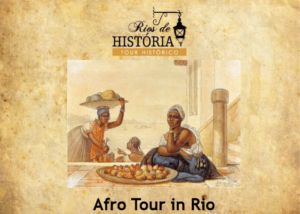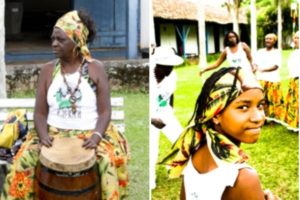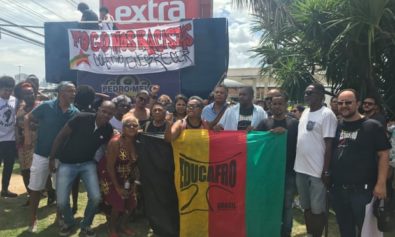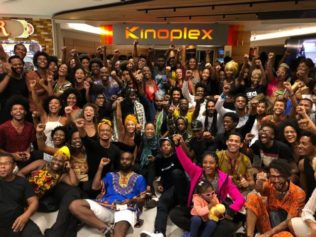
The Rios de Historia Afro Tour includes stops at a slave cemetery and the birthplace of Samba.(Image courtesy of Rios de Historia)
Started just eight years ago, Brazil’s Rios de Historia cultural tour has attracted thousands of travelers from the U.S. and abroad, giving tourists a once-in-a-lifetime look at the nation’s most dazzling historic and cultural sites.
The best journeys tend to occur off the beaten path, however, and the “Rivers of History” tour does not disappoint when it comes to sightseeing in Brazil’s less-traveled regions — especially those teeming with African history, culture and influence.
While must-see cities like Salvador and Rio de Janeiro tout some of the larger populations of Afro-Brazilian locals, tour concierge Rosane Lucas said there are still aspects of the region’s Black history that remain untold.
“I’m Black, and I noticed that Rio de Janeiro is missing this part [of our history] a lot,” said Lucas, who runs one of the only tours in Rio exploring the city’s African history. “We have a lot of Black people here, but we’re not very recognized. … So, I decided to do something for my people.”
The Brazil native partnered with organizers and knowledgeable teachers from Rios de Historia to create an educational tour that focused on the former Olympic city’s Black/African roots. She emphasized that the tours are not only about sightseeing but also about immersing oneself in the area’s Black history and culture.
“I had this dream to do these kinds of tours here to represent [Black people],” Lucas said. “That’s the point. We must recognize it, and we must know about our culture.”
Among the tour’s unique sites is the Instituto Prestos Novos (the New Black People Institute), one of the most significant archaeological sites in Brazil where a slave cemetery was found inside a home in the heart of the port region in Rio. Tourists also can take a walking tour of downtown to visit the Valongo Pier, the key arrival port for enslaved Africans in Brazil. Over 500 enslaved workers from the Congo, Angola and other African nations arrived at this port in 1811, according to Rios de Historia.

The Instituto Prestos Novos is one of the most unique and interesting stops on the tour. (Image courtesy of Rios de Historia)
Bitter reminders of the transatlantic slave trade still permeate the Portuguese-speaking nation today, as an estimated 4.6 million enslaved Africans were remanded to Brazil, the latest research from Atlanta’s Emory University uncovered. Close to two million Africans in bondage were placed in Rio de Janeiro between 1500 and 1856, their labor helping to drive the economy for decades.
Other stops along the trail routes include el Pedro do Sal, or the Salt Stone, where the world-famous Samba dance was born; the coffee farms in Barra do Piraí; and a site teaching the traditional Brazilian martial art of capoeira.

“As a son of people from Salvador and Bahia, my childhood interest in Afro history in Brazil has since developed my knowledge to be a expert for the theme,” Melo said.
Melo, who also serves as a teacher on the tours, went on to give more information regarding the company’s Afro-Brazilian excursions and discussed the roles that slavery and African history and culture have played in shaping Brazil into the country it is today.
Melo: The archaeological site was discovered in 1996 under the house of a family during the reform of the new Black cemetery that was created for those who did not survive the crossing between Africa and Brazil. With the creation of a cultural center there, the institute was able to offer various workshops on Black culture and historical episodes of Brazilian history. For many years, the institute lived on donations but [they] did not cover its costs. There was a possibility of closing its activities, but the center soon received financial help.
ABS: Approximately how many enslaved Africans were found buried in the Instituto Prestos Novos?

Melo: While several countries industrialized, Brazil continued to be agricultural during the industrial revolution age. The slave was the main labor force of the Brazilian economy — initially with the sugar cane cycle, through the extraction of gold and, finally, at the height of the coffee plantations, Brazil did not move without the African slave. Even after its abolition in 1888, the Brazilian empire would lose much of its political force, which would help the arrival of the Republic in 1889.

